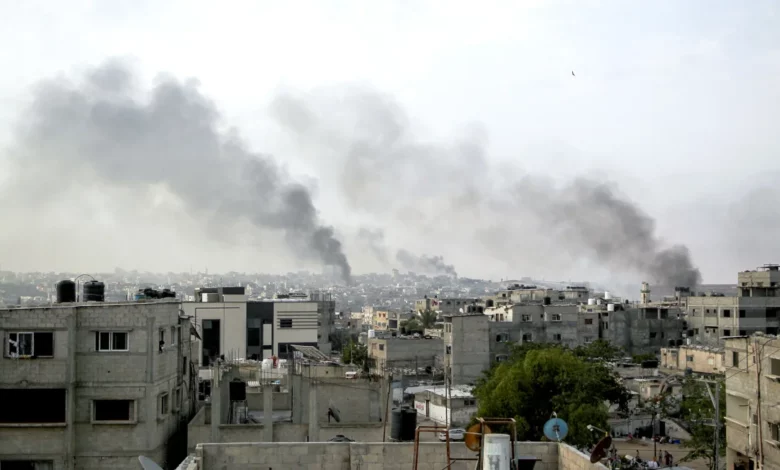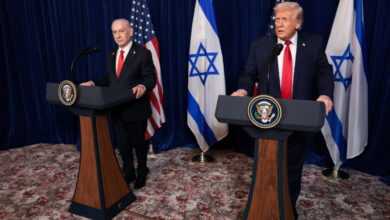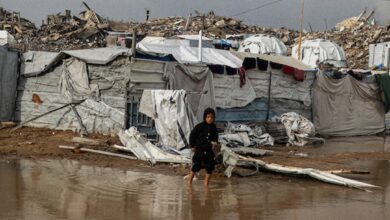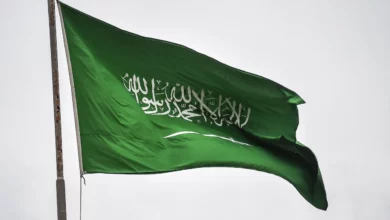
Israel’s tanks were seen in central Rafah on Tuesday for the first time since its military entered Gaza’s southernmost city earlier this month, two eyewitnesses told CNN, signaling a new phase in its offensive despite mounting global pressure.
They arrive two days after a strike on a Rafah camp killed dozens of displaced Palestinians on Sunday and as the international community urges Israel to stop its assault on the city.
Israeli strikes over the past two days in Rafah have forced more displaced people to flee. Two further attacks in Rafah killed at least 29 Palestinians on Tuesday, according to authorities in Gaza.
The first hit a displacement camp just 150 meters from the site of Sunday’s strike. The second hit a displacement camp in the southern coastal town of Al-Mawasi, an area designated by Israel as a “safe zone” where it had earlier ordered thousands of people to evacuate to.
Israel has denied striking a humanitarian area in Al-Mawasi.
Staunch ally the United States said President Joe Biden is not altering his policy toward Israel, suggesting the strikes had not yet crossed a red line that would force changes in American support. White House National Security Council spokesman John Kirby asserted on Tuesday there were no indications yet that Israel had waged a military campaign that would prompt Biden to withhold aid or weapons.
Biden had said in a CNN interview earlier this month that he wouldn’t allow certain US weapons to be used in a major offensive in Rafah.
His administration has warned against a large-scale ground invasion in Rafah unless the well-being of civilians can be guaranteed.
Some 1.3 million Palestinians were sheltering in Rafah before Israel began its operation there, having fled from other parts of Gaza since the conflict began seven months ago. Around 1 million have fled the city since, according to UN figures.
Israel’s advance deeper into Rafah comes despite the International Court of Justice (ICJ) ordering it to “immediately halt” its military operation there. The UN and some of Israel’s European allies have called on it to abide by the ICJ’s order, saying it is binding.
In Khan Younis, north of Rafah, people attempting to evacuate told CNN they do not know where else to go as they try to head north toward Deir El-Balah in central Gaza. Video shows mattresses, wooden panels, chairs, and various other belongings piled on top of vehicles and donkey carts.
“What’s happening now, whether in Rafah, Khan Younis or Gaza in general, is the disastrous displacement of people. There is no shelter, no life, no future,” said Ansar Mahdi, a Palestinian who said she has now been displaced four times.
Walking on crutches, Mohamed Jarbou, said: “The elderly have been humiliated. Children humiliated. What’s wrong? They are all civilians.”
Tanks in Rafah
Alaa Abu Ibrahim, a Rafah resident, told CNN that Israeli tanks were seen at the Al Awda roundabout in the center of the city. Another resident, Salma AlKadoomi, said she saw armored vehicles in the downtown area.
“These vehicles advanced in the middle of the night,” AlKadoomi told CNN.
Asked about reports of tanks advancing in the city, Israel Defense Forces (IDF) spokesman Rear Admiral Daniel Hagari told a media briefing on Tuesday that the military is operating in Rafah in a “targeted” and “precise” way.
“There are still Hamas battalions in Rafah. A couple of days ago launchers from Rafah fired (rockets) to Tel Aviv. Millions of people went into bomb shelters,” he said.
Israel began a limited ground operation in Rafah on May 7, crossing the Philadelphi Corridor – a 14-kilometer (about 8.7-mile) buffer zone on the Egypt-Gaza border – and seizing the Palestinian side of the border with Egypt.
Egypt has strongly opposed the operation at its border. On Monday, an Egyptian security worker was killed on the border with Gaza in a shooting that involved Egyptian and Israeli soldiers. Egypt’s state-affiliated Al-Qahera News outlet said “Palestinian resistance” fighters were also involved.
Displacement camps hit again: Palestinian officials
Palestinian officials said Tuesday’s fresh Israeli strikes had killed 29 people – at least eight at the Tal al-Sultan camp and 21 at a camp in Al-Mawasi, though the IDF has denied striking a humanitarian area in Al-Mawasi.
CNN has followed up, asking if the IDF has struck elsewhere in Al-Mawasi, such as the UN warehouse that is in the vicinity of the camp, but has not received a reply.
The first strike hit three tents at Tal al-Sultan at around 3 a.m. local time, according to residents and a CNN stringer in Rafah. At least eight people were killed and transferred to a field hospital in Tal al-Sultan, according to the Emergency Committee of the Rafah Governorate. CNN has reached out to the IDF for comment on the strike at Tal al-Sultan.
The camp hit on Tuesday is approximately 150 meters from another displacement camp where an Israeli strike and ensuing fire on Sunday killed at least 45 people.
Video from CNN’s stringer in Tal al-Sultan shows displaced people dismantling their makeshift living arrangements, gathering their belongings and evacuating the area on trucks and donkey carts.
Al-Mawasi, north of Rafah, is supposedly a “safe zone.” In early May, the Israeli military ordered people in eastern Rafah to “immediately head to the expanded humanitarian area in Al-Mawasi,” as it stepped up its operations in the area. The Al-Mawasi camp was already crowded with displaced people before civilians in Rafah were ordered to move there. The UN has said it is not “quite suitable” for habitation.
Videos obtained by CNN show several dead bodies lying on sand covered in bloodied blankets with dozens of people shrieking and gathering around them. Children are seen crying next to the bodies of women whose faces are covered in blood.
Israeli investigation
Israeli Prime Minister Benjamin Netanyahu on Monday said the civilian casualties caused by Sunday’s strike on the camp in Rafah were “a tragic error.”
Israel launched an investigation into the event, and on Tuesday the IDF claimed the deadly fire at the camp could not have been caused solely by the weaponry used by Israel.
“Our munitions alone could not have ignited a fire of this size. Our investigation seeks to determine what may have caused such a large fire to ignite,” Hagari said. “We are looking into all possibilities, including the option that weapons stored in a compound next to our target, which we did not know of, may have ignited as a result of this strike.”
He showed aerial footage of a strike on a structure in which he said senior Hamas commanders were meeting and said that the military used two munitions with 17-kilogram (37 lbs) warheads. “This is the smallest munitions that our jets could use.”
“We are working to verify the cause of the fire, it is still too early to be determined,” Hagari said. “Even when we do find the cause of the fire that erupted it won’t make this situation any less tragic.”
CNN’s Nadeen Ebrahim and Mostafa Salem contributed to this report. Journalist Tareq El Helou reported from Rafah.




